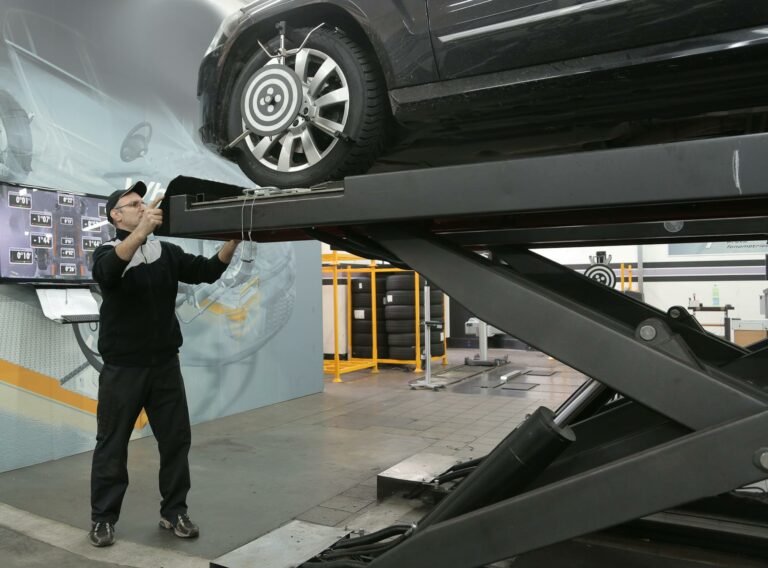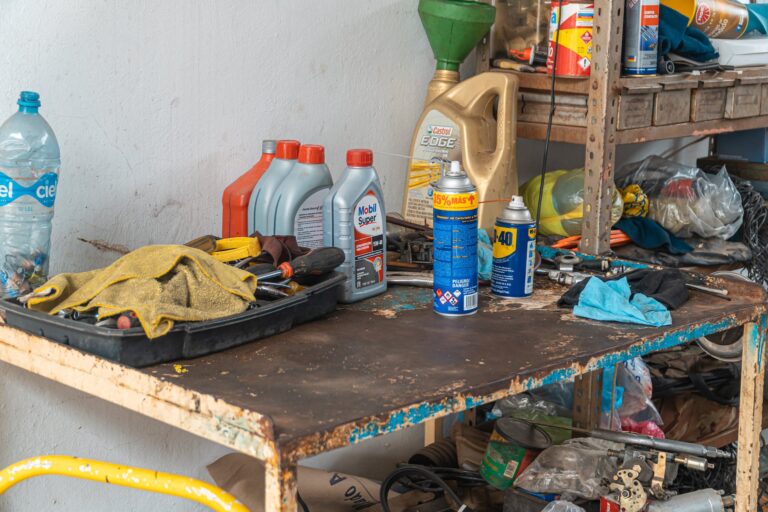Understanding Brake System Maintenance
When it comes to vehicle safety, a well-maintained brake system is essential. Understanding the importance of regular brake system checks and knowing the recommended frequency of these checks can help ensure the reliability and performance of your brakes.
Importance of Brake System Check
Regular brake system checks are crucial for several reasons. First and foremost, they help ensure your safety on the road. A properly functioning brake system allows you to maintain control over your vehicle and respond effectively to any unexpected situations. By identifying and addressing potential issues early on, a brake system check can help prevent accidents and minimize the risk of brake failure.
Another key reason for conducting brake system checks is to extend the lifespan of your brake components. The individual elements of a vehicle’s brake system, such as brake pads and rotors, are designed to wear out gradually over time. Regular monitoring of these parts allows for timely replacement, preventing further damage to other brake system components and potentially saving you from more extensive and costly repairs in the future.
Frequency of Brake System Check
The recommended frequency for brake system checks can vary depending on factors such as driving conditions and personal driving habits. However, a general guideline is to have your brake system inspected at least once a year or every 12,000 miles, whichever comes first (Christian Brothers Automotive). Regular inspections help ensure that any potential issues are identified early, allowing for prompt maintenance or repairs.
It’s important to note that certain signs may indicate the need for an immediate brake system check, regardless of the recommended frequency. If you notice any of the following signs, it’s crucial to have your brake system inspected promptly:
- Noises when braking, such as grinding or squeaking sounds, which may indicate worn brake pads or other issues (brake noise).
- A soft or spongy brake pedal that requires more effort to engage, which can be a sign of air or moisture in the brake lines or other brake system problems (soft brake pedal).
- Vehicle pulling to one side when braking, which may indicate uneven brake pad wear or a problem with the brake calipers (vibrating brake pedal).
By adhering to regular brake system checks and addressing any issues promptly, you can maintain the optimal functionality of your brake system, enhance your vehicle’s safety, and potentially save on more extensive repairs down the line.
For professional brake system checks and maintenance, consider visiting a trusted brake repair shop. Alternatively, if you prefer to perform your own inspections, you can refer to our article on DIY brake system inspection tips for guidance. Remember to always prioritize safety and consult a qualified brake mechanic if you are unsure about any aspect of your brake system maintenance.
Signs that Indicate the Need for Brake System Check
To ensure the safety and optimal performance of your vehicle, it’s important to be aware of signs that indicate the need for a brake system check. Ignoring these signs can lead to potential brake failure and compromise your safety on the road. Keep an eye out for the following indicators that it’s time to have your brake system inspected.
Noises When Braking
Unusual noises while braking can be a clear sign that your brake system requires attention. Squeaking or squealing noises, particularly when applying the brakes, can indicate that the brake pads are wearing thin and need to be replaced. These noises are often caused by a small metal indicator that is embedded in the brake pads. When the brake pads become worn, the indicator comes into contact with the rotor, creating the squeaking sound (Performance Honda Store). If you hear a grinding or metal-on-metal sound, it’s a strong indication that the brake pads are significantly worn and immediate replacement is necessary (Performance Honda Store).
Soft or Spongy Brake Pedal
If your brake pedal feels soft or spongy when pressed, it could be an indication of a problem within the brake system. This can be caused by various issues, such as a brake fluid leak or air in the brake lines. A soft brake pedal may not provide the necessary stopping power, which can compromise your ability to brake effectively. It is crucial to have the brake system inspected and repaired promptly to ensure your safety on the road (Christian Brothers Automotive).
Vehicle Pulling to One Side
If your vehicle pulls to one side when you apply the brakes, it may indicate an issue with the braking system. This pulling can be caused by uneven brake pad wear or a problem with the brake calipers. It is important to address this issue promptly as it can impact the stability and control of your vehicle while braking. A brake system check will help identify the underlying cause and allow for appropriate repairs to be made (Christian Brothers Automotive).
By paying attention to these signs, you can identify potential brake system issues early on and take the necessary steps to address them. Regular brake system checks, especially if you notice any of these signs, are essential to maintain the safety and performance of your vehicle. If you’re unsure about the condition of your brakes, it’s always recommended to seek professional brake services from a qualified mechanic or brake repair shop to ensure the proper maintenance and functionality of your brake system.
Components of the Brake System
To fully understand the brake system and perform a thorough brake system check, it’s essential to familiarize yourself with its key components. The main components of a typical brake system include brake pads, brake fluid, and brake lines.
Brake Pads
Brake pads play a critical role in the braking system. They are responsible for creating the friction that slows down and stops the vehicle. When you press the brake pedal, hydraulic pressure is applied to the brake pads, which then press against the brake rotors or drums to generate the necessary friction and decelerate the vehicle.
Over time, brake pads wear down due to the friction and heat generated during braking. It is recommended to check the brake pads every 12,000 miles and replace them if necessary (Action Gator Tire). Signs that indicate the need for brake pad replacement include squeaking or grinding noises while braking and the brake warning light being illuminated on the dashboard (Performance Honda Store). The lifespan of brake pads typically ranges from 30,000 to 70,000 miles, depending on driving conditions and habits.
Brake Fluid
Brake fluid is a hydraulic fluid that transfers the force from the brake pedal to the braking components. It plays a crucial role in ensuring that the braking system operates effectively. Brake fluid works by amplifying the force applied to the brake pedal, allowing for efficient braking.
Regular maintenance of brake fluid is essential to ensure the proper functioning of the braking system. Brake fluid attracts moisture over time, which can lead to corrosion and reduce the effectiveness of the braking system. Cloudy or milky brake fluid is an indication that it needs to be changed (Action Gator Tire). It is generally recommended to change the brake fluid every 25,000 miles to maintain optimal braking performance.
Brake Lines
Brake lines are a crucial component of the brake system as they carry the brake fluid between the master cylinder and the brake calipers or wheel cylinders. These lines are typically made of metal and are designed to withstand the high pressures generated by the braking system.
Inspecting the brake lines is an important part of a comprehensive brake system check. Look for signs of damage, such as leaks or corrosion. Any brake fluid leaks should be addressed promptly, as they can compromise the performance of the braking system and pose a safety risk. If you notice any issues with the brake lines, it is recommended to have them repaired or replaced by a qualified brake mechanic.
Understanding the various components of the brake system is crucial for maintaining the safety and efficiency of your vehicle. By regularly checking and maintaining the brake pads, brake fluid, and brake lines, you can ensure that your braking system functions optimally, providing you with reliable stopping power when you need it most. Remember to consult a professional brake service shop, such as brake service near me, for any necessary repairs or maintenance tasks related to the brake system.
Performing a Brake System Check
To ensure the safety and reliability of your vehicle’s braking system, performing regular brake system checks is essential. This involves inspecting various components of the brake system, including brake pads, brake fluid, and brake lines.
Inspecting Brake Pads
Brake pads play a critical role in the braking process, as they create the necessary friction to stop your vehicle. It is recommended to check the condition of your brake pads every 12,000 miles and replace them if necessary (Action Gator Tire). Here are some signs to look out for when inspecting your brake pads:
- Thickness: Measure the thickness of the brake pad using a caliper. If the pad thickness is below the manufacturer’s recommended minimum thickness, it’s time for a brake pads replacement.
- Wear Indicator: Many brake pads have a wear indicator, which is a small metal tab that produces a squealing noise when the brake pads are worn down. If you hear a squeaking or squealing noise while braking, it may indicate that the brake pads need to be replaced (Performance Honda Store).
- Visual Inspection: Visually inspect the brake pads for any signs of excessive wear, such as uneven or tapered wear, deep grooves, or cracks. If you notice any of these signs, it’s crucial to have your brake pads replaced as soon as possible.
Checking Brake Fluid
Brake fluid is a vital component of the brake system, as it transfers the force from the brake pedal to the brake components. Over time, brake fluid can become contaminated or degrade, affecting the performance of your brakes. It is generally recommended to change the brake fluid every 25,000 miles (Action Gator Tire). Here’s how you can check your brake fluid:
- Fluid Level: Locate the brake fluid reservoir, typically located near the firewall on the driver’s side. The reservoir should have a labeled “minimum” and “maximum” level indicator. Check the fluid level and ensure it falls within the recommended range.
- Fluid Condition: Brake fluid should be clear and free from any cloudiness or milky appearance. If the fluid appears cloudy or milky, it may indicate the presence of moisture and the need for a brake fluid flush. Moisture in the brake fluid can lead to corrosion and reduce the effectiveness of the braking system (Action Gator Tire).
Examining Brake Lines
The brake lines are responsible for carrying the brake fluid to the brake components. It’s important to inspect the brake lines for any signs of damage or leaks. Here’s how to examine your brake lines:
- Visual Inspection: Carefully inspect the brake lines for any signs of wear, corrosion, or damage. Look for cracks, bulges, or wet spots, which may indicate a brake fluid leak. Any visible damage should be addressed promptly to ensure the integrity of the brake system.
- Brake Line Flexibility: Gently squeeze the brake lines to check for any soft spots or areas of weakness. The lines should feel firm and not easily deform. Soft spots or flexibility in the lines may indicate a potential issue and should be examined further by a qualified mechanic.
Regularly examining your brake pads, brake fluid, and brake lines is crucial for maintaining the safety and proper functioning of your vehicle’s braking system. If you notice any signs of wear, damage, or abnormal behavior, it’s important to seek professional brake services from a reputable brake repair shop. Remember, a thorough brake system check can help prevent potential brake failures, ensure optimal braking performance, and keep you safe on the road.
Professional Brake System Check vs. DIY Inspection
When it comes to ensuring the safety and optimal performance of your vehicle’s brake system, periodic inspections are essential. While some car owners may attempt to perform a DIY inspection, there are distinct benefits to having a professional technician conduct a comprehensive brake system check. Let’s explore the advantages of both options.
Benefits of Professional Brake System Check
Having your brake system checked by a professional technician who specializes in brake services offers several advantages:
-
Expertise and Experience: Professional technicians have the necessary expertise and experience to accurately diagnose and identify any potential issues with your brake system. They are trained to recognize warning signs and can provide you with an accurate assessment of your brake system’s condition.
-
Specialized Tools and Equipment: Professional brake service shops are equipped with specialized tools and diagnostic equipment specifically designed for brake system inspections. These tools allow technicians to thoroughly evaluate the components of your brake system and detect any underlying problems that may not be apparent during a DIY inspection.
-
Comprehensive Inspection: During a professional brake system check, technicians conduct a thorough examination of all brake system components, including brake pads, brake fluid, and brake lines. They have the knowledge and experience to identify signs of wear, leakage, or any other potential issues that may compromise the performance of your brakes.
-
Manufacturer Recommendations: Professional technicians are familiar with the brake system maintenance guidelines provided by vehicle manufacturers. They can ensure that your brake system is inspected and maintained according to the manufacturer’s recommendations, helping to extend the lifespan of your brake components and ensure optimal performance.
-
Peace of Mind: By entrusting your vehicle to a qualified professional, you can have peace of mind knowing that your brake system has been thoroughly inspected and any necessary maintenance or repairs have been performed by an expert.
DIY Brake System Inspection Tips
While a professional brake system check is highly recommended, there are some steps you can take to perform a basic DIY inspection:
-
Visual Inspection: Start by visually inspecting your brake components. Look for signs of uneven wear on the brake pads, any fluid leakage around the wheels, or loose brake lines.
-
Brake Pad Thickness: Measure the thickness of your brake pads using a brake pad gauge or a ruler. Compare the measurements to the manufacturer’s specifications to determine if your brake pads are worn and in need of replacement.
-
Brake Fluid Level: Check the brake fluid reservoir to ensure it is at the appropriate level. If it is low, it may indicate a leak or that the brake pads are worn and need replacement. Refer to the vehicle’s owner’s manual for the correct type of brake fluid to use.
-
Brake Pedal Feel: Pay attention to the feel of the brake pedal. If it feels soft or spongy, it may indicate air in the brake lines or a potential problem with the brake system. A firm and responsive brake pedal is essential for effective braking.
-
Brake Noise: Listen for any unusual noises when applying the brakes, such as squeaking, grinding, or scraping. These noises may indicate worn brake pads or other issues that require attention.
While a DIY inspection can provide some insight into the condition of your brake system, it is important to note that it may not be as thorough or accurate as a professional inspection. If you notice any concerning signs during your DIY inspection or if it has been some time since your last professional brake system check, it is advisable to schedule a visit to a brake repair shop for a comprehensive examination by a qualified brake mechanic.
Regular brake system maintenance is crucial for safety on the road and to prevent costly repairs. Whether you opt for a professional brake system check or perform a DIY inspection, it is important to follow the vehicle manufacturer’s recommendations and consult a professional technician if any issues or concerns are identified during the inspection.
Importance of Regular Brake System Maintenance
Regular maintenance of the brake system is crucial for the overall safety and performance of your vehicle. By prioritizing regular brake system checks, you can extend the lifespan of brake components, enhance braking performance, and ensure safety on the road.
Extending Brake Component Lifespan
Performing regular brake system maintenance helps extend the lifespan of your brake components. The individual elements of a vehicle’s brake system, such as brake pads and rotors, are designed to wear out gradually over time. By monitoring these parts and addressing any issues promptly, you can extend their lifespan and avoid costly repairs in the future (Sun Devil Auto). Regular maintenance allows you to identify and replace worn-out brake pads, brake rotors, and other components before they cause further damage to your brake system and compromise your safety.
Enhancing Braking Performance
Regular brake system maintenance is essential for maintaining optimal braking performance. Over time, brake pads wear down, brake fluid can become contaminated, and brake lines may develop leaks. By regularly checking and maintaining these components, you can ensure that your brakes are operating at their best. This ensures consistent and reliable braking, reducing the risk of accidents and providing you with the confidence to drive safely.
Ensuring Safety on the Road
The safety of you, your passengers, and other road users is of utmost importance. Neglecting to check and maintain the brake system can lead to increased stopping distances, reduced braking effectiveness, and potential brake failure, which can be dangerous and increase the risk of accidents (Tune Up Plus). Regular brake system checks can help prevent brake failure and ensure the safety of the vehicle and its occupants. By identifying any potential issues early on, you can address them promptly and avoid the potential dangers associated with faulty brakes.
Regular brake system maintenance is essential for the overall safety and performance of your vehicle. By prioritizing routine brake system checks, you can extend the lifespan of brake components, enhance braking performance, and ensure safety on the road. Don’t overlook the importance of regular brake system maintenance – it’s a crucial part of responsible vehicle ownership.







